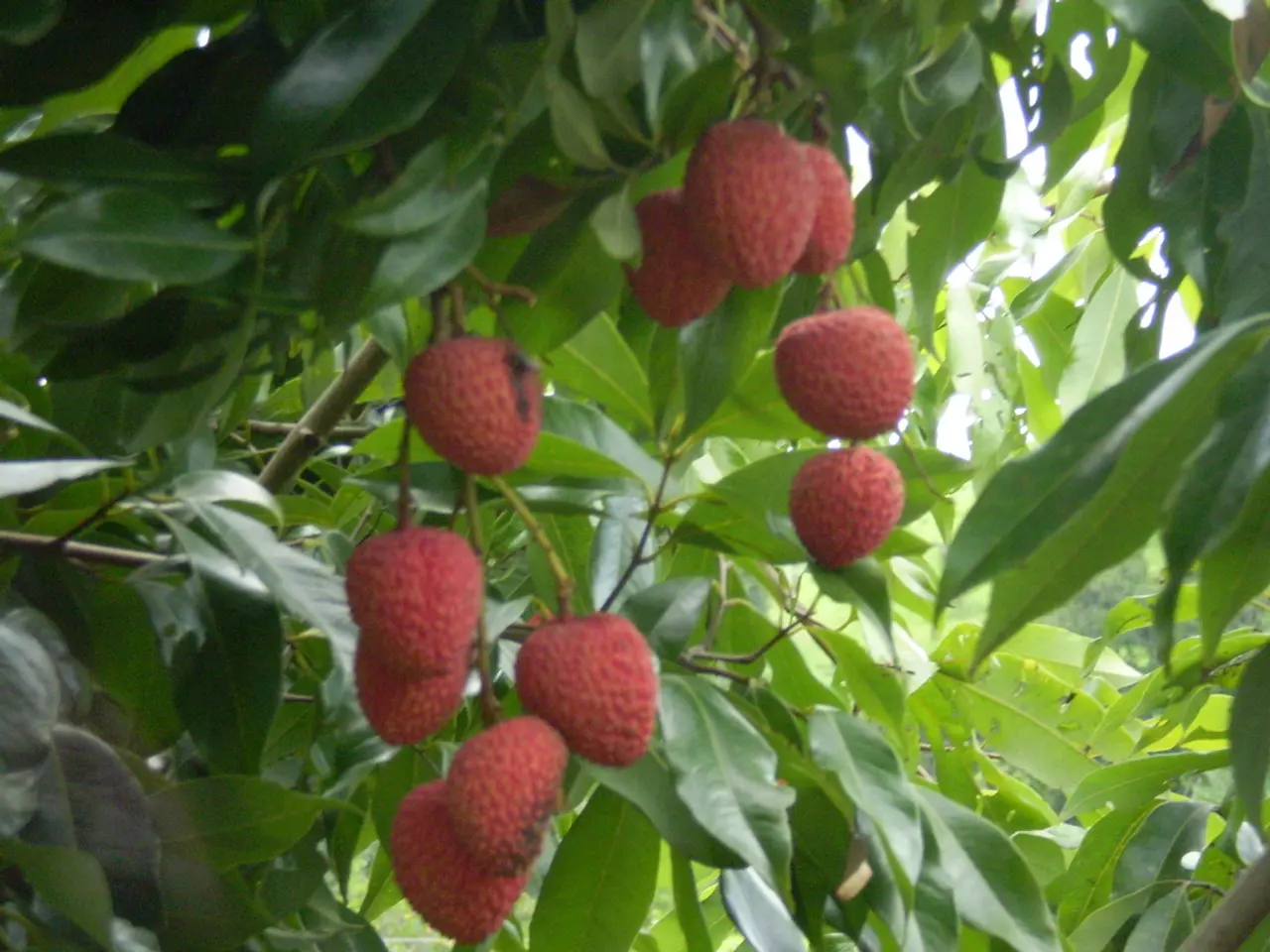Cultivating Strawberries in Your Backyard Plot
Strawberries are a popular choice for gardeners in Ohio, known for their sweet taste and versatility in various dishes. Here's a guide on how to grow these delicious fruits successfully in the Buckeye State.
Choosing the Right Strawberry Cultivars
When it comes to strawberry cultivars, there are several options suitable for Ohio's climate. Albion, Honeoye, and Chandler are among the top choices, thanks to their cold hardiness, production, and flavour. For more detailed information, Ohio State University offers resources and courses on strawberry production [1].
Planting Techniques and Spacing
Strawberry plants should be planted in full sun for the maximum yield and the best quality. They grow best in loose, fertile soils containing large quantities of organic matter. The soil should have a pH of 5.8 to 6.5 [2].
Day-neutral strawberry plants should be set 8 to 12 inches apart in the row and 30 to 36 inches between rows. For the first year, remove the blossoms of day-neutral types of plants until about the middle of June [3].
Cultural Practices
Important cultural practices for growing strawberries include weed control, proper fertilizer, blossom removal, irrigation, renovation of strawberries after harvest, insect and disease control, and mulch for protection from cold temperatures and diseases. Mechanical cultivation, mulching, and certain herbicides are suitable for maintaining essentially weed-free strawberry plantings [2].
Watering and Soil Testing
Strawberry plants require 1 inch to 1.5 inches of water per week from mid-June to mid-August. Soil testing every two to three years is recommended for the best strawberry yield and quality [2].
Avoiding Disease and Pest Problems
To minimize insect and disease problems, avoid planting strawberry plants in areas where potatoes, tomatoes, or sod were grown recently. Selecting disease-resistant cultivars will also help reduce the risks of damage from plant diseases [2].
Harvesting and Post-Harvest Care
Strawberries can produce up to one quart of fruit per plant in the first year when grown in a matted row. After three years of fruiting, a strawberry bed needs to be renovated to stay productive for one or two more years [4].
Winter mulching with straw is necessary to provide winter protection for the plants. Frost protection is crucial for strawberry flower buds, and mulches should be pulled from plants in early spring [5].
Using Strawberries
Strawberries are excellent for jams, jellies, and pies, and freshly sliced and sugared strawberries are excellent when served chilled either alone or over shortcake or ice cream. They are also versatile as a dessert food and have a very high vitamin C content [6].
Excess berries can be turned into jam, jellies, or frozen for future use. Strawberries contain many antioxidants, which have anticancer properties [7].
Expanding Your Strawberry Patch
More strawberry plants can be ordered and planted since they are relatively inexpensive. Home fruit growers have a large number of cultivars to select from, with a greater selection available for June-bearing types than for the day-neutral types [8].
After renovation, strawberry plants may look depressing but will recover beautifully and be much more productive [3].
Growing More Than One Year
Strawberry plants can be fruited more than one year but probably not for more than three harvest seasons [9]. A new planting should be established after strawberry plants produce fruits for more than three to four years for maximum production every year [10].
Growing Strawberries in Challenging Conditions
If drainage is a problem, consider planting strawberries in raised beds or on ridges. Granny May's Strawberry Farm, which partners with the University of California-Davis, also tests new varieties, indicating an interest in exploring diverse strawberry cultivars [3].
References:
[1] Ohio State University Extension - Strawberry Production [2] University of Illinois Extension - Strawberry Production [3] Granny May's Strawberry Farm - Strawberry Cultivars [4] University of California Agriculture and Natural Resources - Strawberry Production [5] University of Missouri Extension - Strawberry Production [6] University of Maine Cooperative Extension - Strawberry Production [7] National Cancer Institute - Strawberries and Cancer Prevention [8] National Gardening Association - Growing Strawberries [9] University of Wisconsin Extension - Strawberry Production [10] University of Maine Cooperative Extension - Strawberry Renovation and Replanting




